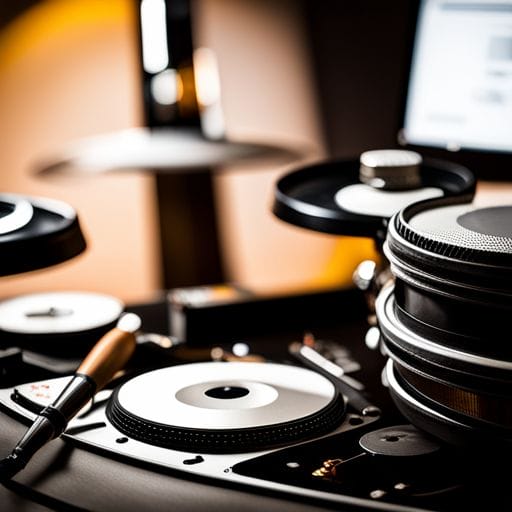Producing Trap Music: Hard-Hitting Drums, Bass and FX

What are the key components of a hard-hitting drum track in trap music production?
Launched initially in the early 2000s, trap music rose from the gritty streets of Southern U.S cities like Atlanta, Houston and Memphis, taking the music industry by storm. Known for its distinctive sonic elements such as layered synthesizers, hard-hitting drum machines, and crispy, diverse sound effects, trap music entices a wave of sonic tension.
Trap Drums: The Hard-Hitting Pulse
Trap drums are arguably the heart of any good trap music production. This genre typically uses a Roland TR-808 Drum Machine, giving birth to some of the most distinctive drum sounds in music history. Trap drums are about creating a hard-hitting pulse that energizes and carries a track.
Creating high quality Trap drum patterns involves the use of hard kicking bass drums, snare rolls that add rhythm variation, and intricate hi-hat patterns that deliver a crisp, rapid-fire sound. Additional elements such as claps, cymbals, and percussions are often mixed in to inject complexity and variation.
Trap Bass: The Heavy Low-End
Trap bass is designed to rumble and shake the speakers. This genre leans towards the heavier side of the bass spectrum, delivering low-end frequencies that add depth and warmth to the tracks. Trap bass often uses 808 sub-basses, that carry long tail and deep tones, creating a unique sonic texture that is an essential part of the trap sound.
Massive, Serum, or Sylenth1 are some of the popular plugins used for creating this heavy bass. To handle such low frequencies, it’s crucial to effectively mix and EQ the bass, ensuring it doesn’t overpower the other elements of the track.
Trap FX: The Icing on the Cake
Trap sound effects (FX) are what often adds the final touches to a trap production. These can range from high-pitched sirens, vocal chops, gunshots, and barking dogs, to sprinkling hi-hats, and atmospheric ambient sounds.
These ingredients add diversity and intrigue to a trap composition, while fortifying the track’s theme and emotion. Additionally, while not often considered an FX, the use of vocal ad-libs is a characteristic element in trap music, often delivering punchy and memorable catchphrases.
Conclusion
Producing trap music involves mastering many elements, but focusing on hard-hitting drums, heavy bass, and diverse FX is a sure way to capture its gritty, energetic essence. Whether you’re a beginner or a seasoned producer, experimenting with these elements and making them your own is the key to creating a unique trap sound.
